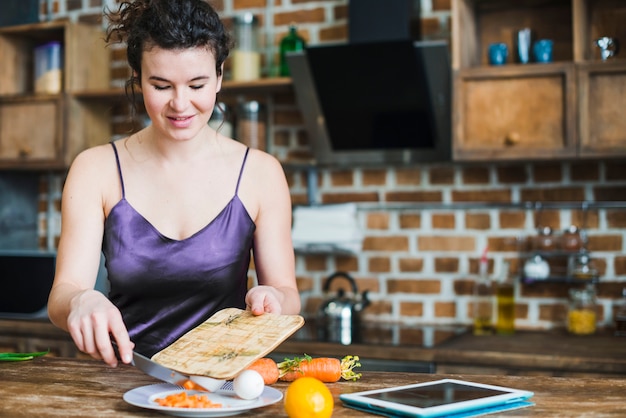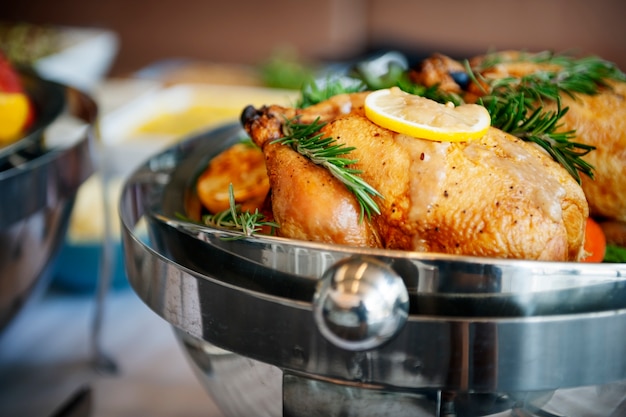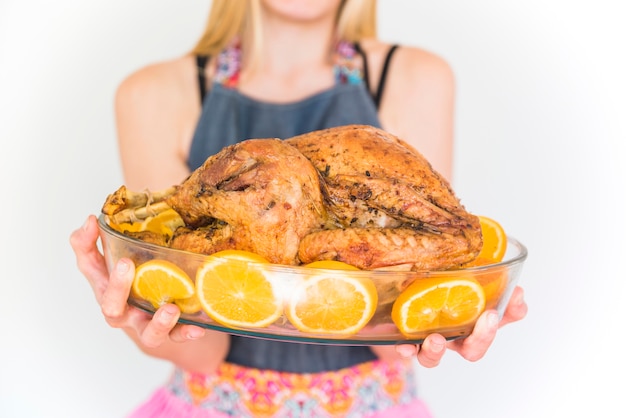Let's be honest, chicken breasts are a kitchen staple. They're versatile, easy to cook, and can be the star of so many meals. But, there's nothing quite as frustrating as opening the oven to find your chicken is either dry as a bone or still raw in the middle. Trust me, I've been there, and it's not a good look.
That's why I've dedicated myself to mastering the art of baking chicken breasts at 400 degrees. Over the years, I've learned a thing or two about choosing the right cuts, prepping them for perfect results, and nailing those baking times. This guide is your one-stop shop for all things chicken breast baking at 400 degrees.
(Part 1) Choosing the Right Chicken Breasts

You can't expect a masterpiece if you start with subpar ingredients, right? Just like building a house, you need the right building blocks for a successful outcome. So, let's talk about picking the perfect chicken breasts.
Choosing the Cut
I'm a big fan of boneless, skinless chicken breasts. They're convenient, easy to work with, and require minimal fuss. However, if you're feeling adventurous, bone-in chicken breasts can offer a richer flavour and a more traditional experience. Just be aware that they might take a bit longer to cook.
Size and Thickness Matters
Now, you might think all chicken breasts are created equal, but that's simply not true. They come in all shapes and sizes, with varying thicknesses. For the best results, it's crucial to choose chicken breasts that are roughly the same size and thickness. This ensures even cooking, preventing some parts from being overcooked while others remain raw.
Quality Control
Once you've got your chicken breasts in hand, take a moment to inspect them. You're looking for a pale, slightly pink colour. Avoid any breasts that have an off-putting odour or any discolouration. Give them a gentle squeeze; they should feel firm and springy. A squishy texture indicates they might have been sitting around for a bit too long.
(Part 2) Prepping for Perfection

Alright, so you've got your chosen chicken breasts, now it's time to get them ready for their oven adventure. A little bit of prep work goes a long way in creating a delicious outcome.
Patting Them Dry
First things first, you need to pat those chicken breasts dry with paper towels. This crucial step ensures that excess moisture doesn't prevent the skin from crisping up (if you're using skin-on breasts) and helps ensure even cooking. We don't want soggy chicken, do we? I know, I've been there, and it's a culinary crime!
Seasoning with Flair
This is where your culinary creativity comes in. There's no right or wrong answer here, just flavour possibilities. Salt and pepper are always a good starting point, but feel free to experiment with your favourite herbs and spices. I like to add garlic powder, onion powder, paprika, and a touch of cayenne pepper for a bit of a kick. Lemon juice or a splash of olive oil can also add depth and complexity to the flavour profile.
(Part 3) The Baking Time Breakdown

Now, the big question: How long do you bake a chicken breast at 400 degrees?
The answer, my friend, lies in the size and thickness of your chicken breasts. Smaller, thinner breasts will bake faster than their larger, thicker counterparts.
General Guidelines
Here are some general guidelines to help you get started:
- Small, thin chicken breasts (about 4-6 oz): Bake for 15-20 minutes.
- Medium-sized chicken breasts (about 6-8 oz): Bake for 20-25 minutes.
- Thick, large chicken breasts (about 8-10 oz): Bake for 25-30 minutes.
Using a meat thermometer: A Must
Now, here's the golden rule: Always use a meat thermometer. It's the only way to know for sure if your chicken is cooked through. You want the internal temperature to reach 165 degrees Fahrenheit. This is the safe temperature that ensures the chicken is cooked and ready to eat.
Avoiding Overcooked Chicken: A Tragedy
Overcooked chicken is a culinary tragedy. It becomes dry, tough, and flavourless. So, it's important to avoid overbaking. Once the internal temperature hits 165 degrees Fahrenheit, remove it from the oven and let it rest.
(Part 4) baking tips and Tricks
Alright, we're getting into the nitty-gritty now. Here are a few tips and tricks to elevate your chicken breast baking game.
Using a Baking Sheet
I prefer to bake my chicken breasts on a baking sheet. It's simple, easy to clean, and allows for excellent air circulation, which promotes even cooking. Line it with parchment paper or foil for easy cleanup.
Creating Steam for Moisture
Sometimes, chicken breasts can dry out during baking. To prevent this, add a splash of water to the bottom of your baking sheet. This creates steam, which helps keep the chicken moist.
Letting the Chicken Rest: A Crucial Step
Once the chicken is cooked, take it out of the oven and let it rest for a few minutes before slicing. This allows the juices to redistribute, resulting in juicy, tender chicken. I know, waiting is hard, but trust me, it's worth it.
(Part 5) The Importance of Oven Temperature: 400 Degrees is Key
We've been talking about baking at 400 degrees, but why is this temperature the magic number? It's not magic, just science. A high oven temperature is essential for baking chicken breasts because it allows the chicken to cook quickly and evenly, creating a crispy skin (if you're using skin-on breasts).
The Science Behind 400 Degrees
400 degrees is the sweet spot for baking chicken breasts. It's hot enough to cook the chicken through without drying it out, but not so hot that it burns the outside before the inside is cooked.
Why Lower Temperatures Don't Work as Well
If you bake chicken at a lower temperature, like 350 degrees, it will take longer to cook. While you might think this will keep the chicken moist, it can actually have the opposite effect. The chicken might end up dry and rubbery because it's been in the oven for a longer period.
(Part 6) Variations and Flavour Combinations: Spice Up Your Chicken
Let's face it, plain chicken breasts can be a bit boring. So, it's time to get creative and add some excitement to your culinary repertoire. Here are a few ideas for flavour combinations that will elevate your chicken game.
Herbed Chicken Breasts
Simple and classic, this variation involves rubbing your chicken breasts with a mixture of fresh or dried herbs like rosemary, thyme, and oregano. Add a pinch of garlic powder and onion powder for an extra layer of flavour.
Lemon and Herb Chicken Breasts
Add a touch of citrus with some lemon zest and juice, and pair it with herbs like thyme, rosemary, and parsley. This combination is both fresh and flavourful.
Garlic and Parmesan Chicken Breasts
For a cheesy kick, sprinkle some grated Parmesan cheese on top of your chicken breasts before baking. Add a few cloves of minced garlic for an extra punch of flavour. This is a crowd-pleasing option.
Spicy Chicken Breasts
If you enjoy a little heat, add some cayenne pepper, paprika, and chili powder to your chicken breasts. You can also use a bit of hot sauce or sriracha for extra kick.
(Part 7) chicken breast recipes to Try: Get Inspired
Now that you've got the basics down, it's time for some recipe inspiration. Here are a few of my favourite chicken breast recipes that are perfect for baking at 400 degrees.
Honey Garlic Chicken Breasts
Ingredients:
- 4 boneless, skinless chicken breasts
- 2 tablespoons honey
- 2 tablespoons soy sauce
- 1 tablespoon garlic powder
- 1 teaspoon black pepper
Instructions:
- Preheat oven to 400 degrees Fahrenheit.
- In a small bowl, combine the honey, soy sauce, garlic powder, and black pepper.
- Place chicken breasts in a baking dish and pour the honey garlic sauce over them.
- Bake for 20-25 minutes, or until the chicken is cooked through.
Lemon Dijon Chicken Breasts
Ingredients:
- 4 boneless, skinless chicken breasts
- 2 tablespoons Dijon mustard
- 1 tablespoon lemon juice
- 1 teaspoon olive oil
- 1/2 teaspoon garlic powder
- 1/4 teaspoon black pepper
Instructions:
- Preheat oven to 400 degrees Fahrenheit.
- In a small bowl, combine the Dijon mustard, lemon juice, olive oil, garlic powder, and black pepper.
- Place chicken breasts in a baking dish and pour the lemon Dijon sauce over them.
- Bake for 20-25 minutes, or until the chicken is cooked through.
Mediterranean Chicken Breasts
Ingredients:
- 4 boneless, skinless chicken breasts
- 1 tablespoon olive oil
- 1 teaspoon dried oregano
- 1/2 teaspoon dried basil
- 1/4 teaspoon garlic powder
- 1/4 teaspoon black pepper
- 1/4 cup chopped Kalamata olives
- 1/4 cup crumbled feta cheese
Instructions:
- Preheat oven to 400 degrees Fahrenheit.
- In a small bowl, combine the olive oil, oregano, basil, garlic powder, and black pepper.
- Place chicken breasts in a baking dish and pour the olive oil mixture over them.
- Top with the olives and feta cheese.
- Bake for 20-25 minutes, or until the chicken is cooked through.
(Part 8) FAQs: Your Baking Questions Answered
Alright, let's address some common questions you might have about baking chicken breasts at 400 degrees.
1. Can I bake chicken breasts with the skin on?
Absolutely! Leaving the skin on can help the chicken stay moist during baking and can create a delicious, crispy skin. Just make sure you score the skin with a knife before baking to allow the fat to render properly. You might need to increase the baking time by a few minutes to ensure the chicken is cooked through.
2. Can I bake frozen chicken breasts?
It's not recommended to bake frozen chicken breasts. They'll take much longer to cook, and you might end up with unevenly cooked chicken. It's best to thaw them in the refrigerator overnight before baking.
3. Can I bake chicken breasts in a covered dish?
You can bake chicken breasts in a covered dish, but it might prevent the skin from crisping up (if you're using skin-on breasts). It's best to leave the dish uncovered for most of the baking time, then cover it for the last few minutes to ensure the chicken stays moist.
4. What can I serve with baked chicken breasts?
The possibilities are endless! You can pair baked chicken breasts with roasted vegetables, a green salad, a side of rice or pasta, or a creamy sauce.
5. How can I store leftover chicken breasts?
Let the chicken cool completely, then store it in an airtight container in the refrigerator for up to 3 days. You can also freeze cooked chicken breasts for up to 3 months.
(Part 9) Final Thoughts: Time to Bake!
So, there you have it, my comprehensive guide to baking the perfect chicken breasts at 400 degrees. Remember, practice makes perfect. Don't be afraid to experiment and find what works best for you.
And, above all, enjoy the process! Cooking should be a pleasurable experience, not a chore. So, grab some chicken breasts, put on your favourite music, and get baking!
Everyone is watching

Corn on the Cob: The Ultimate Guide to Perfectly Cooked Ears
Healthy MealsAh, corn on the cob. Just the name evokes images of sunny days, barbecues, and that sweet, juicy flavour that ...

Perfect Pork Roast Oven Cooking Time: A Guide to Delicious Results
Healthy MealsThere's something truly satisfying about a perfectly roasted pork. The aroma alone is enough to make your mout...

Ham Cooking Time: How Long to Bake, Smoke, or Boil a Delicious Ham
Healthy MealsAh, ham. It's a classic, isn't it? A real crowd-pleaser, especially around holidays. And when done right, it'...

Scallops: The Ultimate Guide to Perfect Cooking
Healthy MealsAh, scallops. Those delicate, sweet, and utterly delicious morsels of the sea. They hold a special place in my...

Spaghetti Squash: The Ultimate Guide to Cooking and Serving
Healthy MealsRemember that time you saw spaghetti squash at the supermarket, looking all bumpy and strange, and thought, "W...
